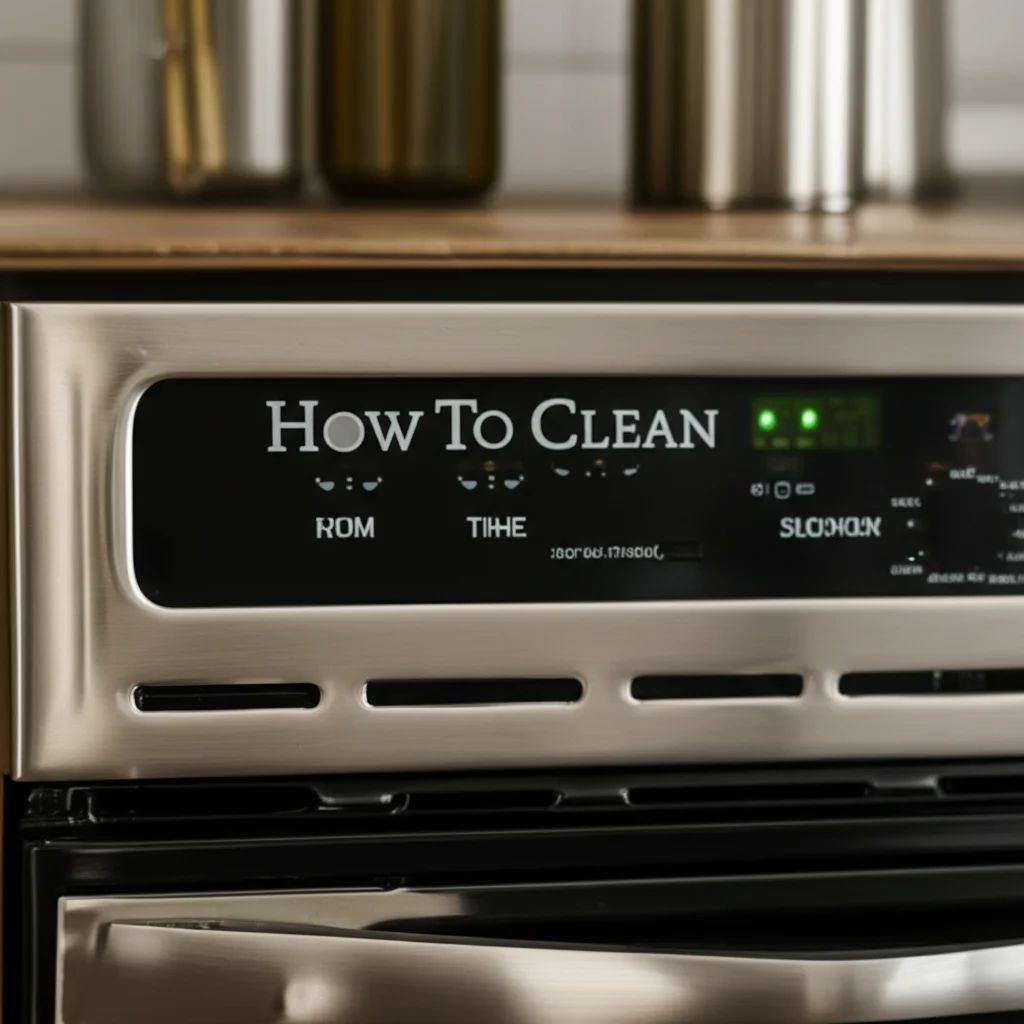· Davia Murnell · Home Maintenance · 14 min read
How To Clean Seashells From The Beach

Mastering Seashell Cleaning: How To Clean Seashells From The Beach Safely
The beach offers beautiful gifts. Finding seashells is a special joy. These small treasures connect us to the ocean. Many people collect them as souvenirs. However, seashells from the beach often carry sand, dirt, and sometimes even tiny sea creatures or dried organic matter. These elements can cause odors or damage the shells over time.
Learning how to clean seashells from the beach properly is important. It ensures your finds remain beautiful. It also helps them last for years. This guide will walk you through various cleaning methods. We cover everything from simple rinsing to deep sanitation. We will help you prepare your seashell collection. You can then use them for display or craft projects.
Takeaway:
- Rinse Immediately: Wash off loose sand and debris right after collecting.
- Address Odors: Use boiling, bleaching, or burying for shells with organic matter.
- Clean Surface Grime: Soak shells in soapy water or a vinegar solution.
- Dry Thoroughly: Allow shells to air dry completely before storage or display.
- Preserve Luster: Apply mineral oil to enhance the natural shine of your cleaned shells.
To clean seashells from the beach, first rinse them thoroughly to remove loose sand and debris. Next, use a suitable method like soaking in soapy water, a bleach solution, or boiling to sanitize and remove organic matter. Finally, dry the shells completely and consider applying mineral oil for preservation.
Initial Steps: Preparing Your Beach Seashells for Cleaning
Bringing seashells home from the beach is exciting. Before starting any deep cleaning, some initial steps are crucial. These first actions prevent larger messes. They also make the cleaning process easier. Always handle your collected shells with care.
Start by sorting your shells. Separate broken pieces from whole ones. Also, look for shells that might still have living organisms inside. If you find a shell with a living creature, please return it to the ocean. We only clean empty shells. This practice respects marine life. It also keeps your home free from unwanted smells.
Next, remove as much loose sand as possible. You can gently tap the shells. Rinse them under cool, running water. A garden hose works well for larger quantities. This initial rinse removes surface dirt. It prepares the shells for more detailed cleaning. This step is like a pre-wash. It gets rid of the most obvious dirt. You can learn more about managing beach sand effectively at How To Clean Beach Sand.
Place your rinsed shells in a bucket or basin. Fill it with plain water. Let them soak for a few hours or overnight. This soaking helps loosen stubborn sand and dirt. It also rehydrates any dried-on residue. After soaking, gently scrub the shells with a soft brush. An old toothbrush is perfect for this. Focus on crevices and textured areas. This initial preparation makes the next cleaning steps more effective.
Basic Cleaning Methods: Removing Surface Dirt and Grime
Once your shells are free of loose sand, it is time for basic cleaning. This step focuses on surface dirt. It also tackles light algae. These methods are safe for most shell types. They use common household items. They help reveal the shell’s natural beauty.
A simple dish soap bath is often enough. Mix warm water with a few drops of mild dish soap. Place your shells in this solution. Let them soak for about an hour. The soap helps break down oils and grime. This makes scrubbing easier. Use a soft brush or cloth to gently clean each shell. Pay attention to cracks and grooves.
For more stubborn dirt, a vinegar solution works wonders. White vinegar is a natural cleaner. It helps remove mineral deposits and light stains. Mix equal parts white vinegar and water. Soak your shells in this solution for 30 minutes to an hour. Do not soak delicate or thin shells for too long. Vinegar is acidic. It can harm fragile shells. After soaking, scrub the shells clean. Rinse them thoroughly under running water. This removes all traces of vinegar. Vinegar is a versatile cleaning agent, useful for many household tasks, including How To Clean Shower With Vinegar.
Another option for surface grime is a gentle bleach solution. Mix one part bleach with ten parts water. Soak shells for a short period, perhaps 10-15 minutes. Bleach effectively whitens shells. It also sanitizes them. However, use bleach sparingly. Too much bleach can make shells brittle. It can also strip their natural color. Always wear gloves when handling bleach. Ensure good ventilation. After a bleach soak, rinse shells completely. Let them air dry.
Deep Cleaning Techniques: Tackling Odor and Stubborn Organic Matter
Some seashells arrive with more than just sand. They might contain dried animal remains. These can cause a very unpleasant odor. Deep cleaning methods are necessary for these shells. These techniques help sanitize and remove all organic material. This ensures your shells are clean and smell fresh.
The boiling method is effective for shells with residual tissue. Place shells in a pot of cold water. Make sure shells are fully submerged. Bring the water to a boil slowly. Let them boil for 5-10 minutes. This process helps loosen any dried organic matter. Use tongs to remove shells carefully. The remaining tissue should be easy to remove. A dental pick or a small hook works well for this. Be cautious when boiling fragile shells. Rapid temperature changes can cause them to crack.
Another powerful method for odor and organic matter is using a bleach bath. This is more intense than a surface clean. Mix equal parts bleach and water in a well-ventilated area. Submerge the shells completely. Let them soak for several hours or overnight. The bleach breaks down organic material. It also eliminates foul odors. Check shells periodically. Once the matter is gone and the smell improves, remove them. Rinse them extremely well. A long rinse under running water is vital. This removes all bleach residue. You do not want the bleach to continue working on the shell.
For shells with persistent organic material or stubborn algae, a burying method can be used. This is a natural, slow approach. Dig a hole in your garden or backyard. Place the shells in the hole. Cover them with soil. Let nature do its work. Over several weeks or months, insects and microorganisms will consume the organic matter. This method is mess-free. It is also very gentle on shells. After the burying period, dig up the shells. Rinse them clean. This technique works well for mold and mildew too, similar to how one might tackle How To Clean Mold With Vinegar in other areas.
Cleaning Seashells with Adhered Material: Algae and Barnacles
Sometimes, seashells come with unwanted hitchhikers. Algae, barnacles, or other marine growths can stick firmly. Removing these requires specific attention. You want to clean the shell without damaging its surface. Different tools and solutions help with these challenges. Patience is key when dealing with stubborn attachments.
For soft algae or sea moss, a stiff brush often works. Soak the shell first in warm, soapy water. This softens the growth. Then, use a toothbrush or a small nylon brush. Gently scrub the affected areas. If the algae is still clinging, a vinegar solution can help. Mix equal parts white vinegar and water. Soak the shell for an hour or two. The acidity helps dissolve the bonds holding the algae. After soaking, try scrubbing again. Rinse the shell thoroughly with fresh water.
Barnacles are harder to remove. They are calcified growths. Do not try to pry them off with metal tools directly. This can scratch or chip the shell. Instead, try the boiling method first. Boiling can sometimes weaken the barnacle’s grip. After boiling, try to gently scrape them off with a dull knife or a wooden stick. Some collectors prefer to leave small barnacles on. They see it as part of the shell’s unique history.
Another method for barnacles is a dilute bleach solution soak. Mix one part bleach with five parts water. Soak the shells for several hours. This can soften the barnacles. Then, carefully chip them away. Always wear gloves. Work in a ventilated area. After removal, rinse the shells thoroughly. This step is essential to stop the bleach’s action. Remember, a clean shell is a lasting treasure.
Restoring Natural Luster: Finishing and Preserving Cleaned Seashells
Once your seashells are thoroughly clean, you might notice they look a bit dull. The ocean’s constant tumbling and natural elements can wear down their original shine. Restoring their natural luster enhances their beauty. It also helps preserve them for longer. This finishing step makes your collection truly shine.
Mineral oil is a popular choice for restoring luster. It is safe and easily accessible. After your shells are completely dry, apply a small amount of mineral oil to a soft cloth. Gently rub the oil over the entire surface of each shell. The oil penetrates the shell, deepening its colors. It brings out the natural patterns. It also gives the shell a subtle sheen. Avoid using vegetable oils. They can become rancid over time. Mineral oil does not go bad. It leaves a long-lasting, clear finish. This makes the shells look as if they just came out of the water.
For a more permanent, glossy finish, you can use clear acrylic spray. Choose a non-yellowing, clear satin or gloss spray. Apply it in a well-ventilated area. Hold the can about 6-8 inches away from the shell. Apply a thin, even coat. Let it dry completely. Then apply a second coat if desired. This provides a durable, protective layer. It seals the shell’s surface. It protects against further dulling or wear. This method is great for shells intended for crafts or outdoor display. However, it changes the shell’s natural feel.
Some collectors prefer a more natural approach. They might simply buff the dry shells with a soft cloth. This friction can bring out a slight shine. It is a gentle way to finish them. This method keeps the shell’s texture and appearance completely natural. The choice depends on your preference. Do you want a subtle enhancement or a glossy finish? Consider how you plan to use the shells. This final step truly completes the cleaning process. It prepares your beautiful finds for display.
Drying and Curing Cleaned Seashells: Essential Steps for Preservation
After cleaning, drying your seashells completely is critical. Any trapped moisture can lead to mold or mildew growth. It can also cause odors over time. Proper drying ensures your shells remain beautiful and last for years. This step prepares them for storage or display. It is as important as the cleaning itself.
Air drying is the simplest and safest method. After rinsing your shells, place them on a clean, dry towel. Lay them out in a single layer. Choose a spot with good air circulation. A sunny windowsill or an outdoor area works well. Turn the shells periodically. This ensures all sides dry evenly. Depending on the humidity and shell size, drying can take a few hours to a few days. Do not rush this process. Patience here prevents future problems. For larger shells or those with deep crevices, drying might take longer.
For shells that contained organic matter and underwent a deep clean, a “curing” period might be beneficial. This means allowing them to dry for an extended time. This ensures all internal moisture evaporates. It also allows any residual odors to dissipate fully. Place these shells in a mesh bag or an open container. Keep them in a cool, dry place for a week or two. This slow, thorough drying helps preserve the shell’s integrity. It prevents them from becoming brittle.
Avoid using direct, high heat to dry shells. This includes ovens or microwaves. Rapid heating can cause shells to crack, chip, or lose their color. Natural air drying is always the best option. Once shells feel completely dry to the touch, they are ready. They should feel light and cool. No damp spots should be present. Proper drying ensures your efforts in cleaning are worthwhile. Your collection will remain pristine.
Common Mistakes to Avoid When Cleaning Seashells from the Beach
Cleaning seashells seems straightforward. However, common mistakes can damage your treasured finds. Knowing what to avoid saves you time and effort. It also protects the delicate beauty of your shells. Being careful during the cleaning process is crucial.
One major mistake is using too much bleach or soaking shells for too long in bleach solution. While bleach effectively cleans and whitens, it is corrosive. Over-exposure can make shells brittle. It can also strip their natural color and protective layers. Always use a diluted solution. Limit soaking times. Always rinse shells extremely well after any bleach treatment. This stops the chemical reaction.
Another error is boiling shells too quickly or unevenly. Rapid temperature changes can cause shells to crack or shatter. Always place shells in cold water. Bring the water to a boil slowly. Also, do not over-boil. Five to ten minutes is usually sufficient for loosening organic matter. Over-boiling can make shells dull or brittle.
Using harsh abrasive tools is also a common mistake. Wire brushes or rough scrubbing pads can scratch the shell surface. These scratches are permanent. They can ruin the shell’s natural polish. Always opt for soft brushes. Old toothbrushes or soft cloths are ideal. Even for stubborn barnacles, gentle scraping with a wooden stick is better than metal tools.
Finally, not allowing shells to dry completely before storage or preservation is a big error. Trapped moisture leads to mildew. It can also cause a musty odor. This can damage the shell over time. Always ensure shells are bone dry before oiling or storing. Lay them out in a single layer in a well-ventilated area for several days. Avoiding these mistakes ensures your seashells remain beautiful. They will be perfect for display or craft projects.
Frequently Asked Questions
Q1: Can I use dish soap to clean all types of seashells?
Yes, mild dish soap is safe for most seashells. It effectively removes surface dirt and grime without damaging the shell. Mix a few drops of soap with warm water. Soak the shells for about an hour. Then, gently scrub them clean with a soft brush and rinse well.
Q2: How do I get rid of the strong “ocean” smell from seashells?
To remove strong odors, especially from shells with organic matter, consider boiling or bleaching. Boil shells in cold water for 5-10 minutes to loosen tissue. For a deeper clean, soak shells in a 50/50 bleach and water solution. Always rinse thoroughly after these treatments.
Q3: Is it safe to use vinegar on delicate shells?
Use caution with vinegar on delicate or very thin shells. Vinegar is acidic. It can dissolve or etch fragile surfaces if left too long. For these shells, use a highly diluted vinegar solution (1 part vinegar to 4 parts water) and limit the soaking time to 15-30 minutes. Always rinse well.
Q4: How can I make my seashells shiny after cleaning?
To restore shine, apply mineral oil to completely dry shells. Rub a small amount onto the shell surface with a soft cloth. This deepens colors and provides a subtle luster. Alternatively, a clear acrylic spray can provide a glossy, protective finish.
Q5: What if I find a living creature inside a seashell?
If you find a living creature inside a seashell, please return it to the ocean immediately. Collecting shells with live inhabitants can be harmful to marine ecosystems and is illegal in many areas. Only collect empty shells to clean and keep.
Q6: How long should I dry shells before storing them?
Allow shells to air dry completely for at least 24-48 hours after cleaning. For larger shells or those that underwent deep cleaning methods like boiling, extend the drying time to several days or even a week. Ensure no moisture remains to prevent mold or odor.
Conclusion
Cleaning seashells from the beach transforms them from raw finds into cherished keepsakes. It is a rewarding process. We have covered various methods. These range from simple rinsing to deep sanitization. You now know how to remove sand, dirt, odors, and stubborn organic matter. We discussed different techniques. These include boiling, bleaching, and using natural solutions like vinegar. Proper drying and finishing steps are also crucial. They help restore the shell’s natural luster.
Taking the time to properly clean seashells ensures their lasting beauty. It preserves them for display. It also prepares them for use in creative projects. Remember to choose the right method for each shell. Always handle them with care. By following these steps, your beach treasures will remain stunning. They will bring the beauty of the ocean into your home. Start cleaning your seashell collection today. Enjoy your beautiful finds!
- seashell cleaning
- beach finds
- preserve seashells
- ocean treasures
- DIY crafts
- shell collection
- natural cleaning
- beach decor


